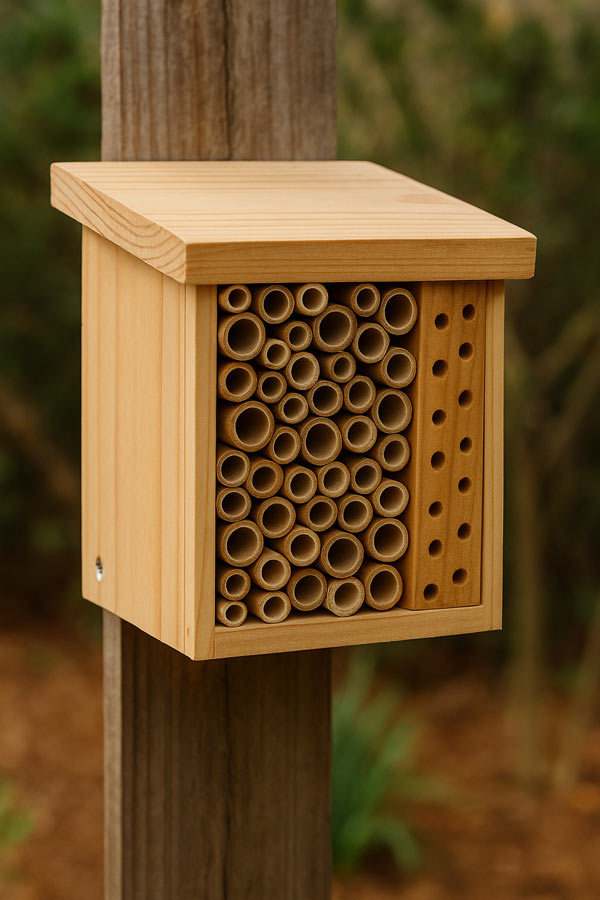World Bee Day is the perfect time to go beyond planting and think about providing safe spaces for pollinators to nest. While many gardeners are familiar with feeding bees through native plants, fewer know that over 90% of bee species in Florida are solitary—they don’t live in hives. These bees, like mason bees and leafcutter bees, rely on natural cavities such as hollow stems, old wood, or burrows in bare ground to lay their eggs. Unfortunately, habitat loss and over-mulched landscapes are making it harder for these quiet pollinators to find places to nest. That’s where bee hotels come in.
Bee hotels are simple structures that provide safe nesting spots for solitary bees. You’ve probably seen them in garden centers or trending online: small wooden boxes filled with bamboo, reeds, or drilled wood blocks. They can be a beautiful and functional addition to a pollinator-friendly garden, but they’re not all created equal. A well-designed bee hotel mimics nature with small, clean, dry tunnels that face the morning sun and are protected from rain. The best ones are made from untreated wood, with holes of varying sizes (ideally between ⅛ and ⅜ inches in diameter and 3–6 inches deep). Avoid plastic or varnished materials, which can trap heat or harbor mold, and make sure all openings are smooth to protect delicate wings.
So, should you build your own bee hotel or buy one? Both have their perks. DIY bee hotels are inexpensive, highly customizable, and a fun weekend project—especially for kids or nature lovers. All you need is a wooden block and a drill, or a bundle of bamboo reeds cut to size and tied together with twine. For the most success, mount your hotel on a fence or tree 3 to 5 feet off the ground, facing east or southeast for warmth. Just be sure to keep it dry and out of areas with heavy rain or sprinklers. On the other hand, buying a ready-made bee hotel is quick and convenient—but choose carefully. Many mass-produced options are poorly designed: too shallow, too large, or made from glossy wood that traps moisture and grows mold. If purchasing, look for models with replaceable or removable nesting tubes, and always read reviews before adding one to your cart.
No matter which route you choose—DIY or buy—it’s important to monitor your bee hotel and clean or replace the nesting materials annually. Without proper care, these cozy-looking spots can harbor parasites or harmful fungi. Still, when placed and managed properly, a bee hotel can provide vital nesting space for Florida’s native bees and offer a close-up look at nature in action.
This World Bee Day, consider adding a bee hotel to your yard or garden. It’s a small gesture with a big impact, helping to support declining bee populations while adding charm and purpose to your outdoor space.

